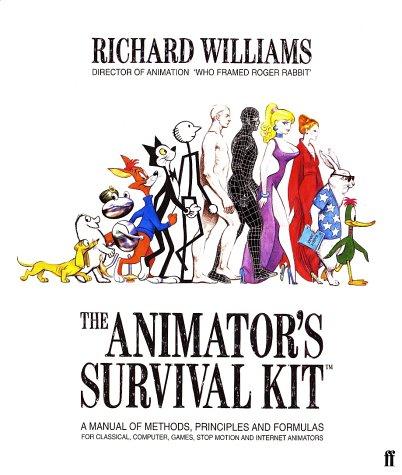
《Matlab for Neuroscientists》书籍《Matlab for Neuroscientists》
作者:《Matlab for Neuroscientists》书籍
出版社:Academic Press
出版年:2008-11-12
评分:9.0
ISBN:9780123745514
所属分类:网络科技
书刊介绍
内容简介
Matlab is the accepted standard for scientific computing, used globally in virtually all Neuroscience and Cognitive Psychology laboratories. For instance, SPM, the most used software for the analysis and manipulation of fMRI images in research and clinical practice is fully programmed in matlab, and its use of the possibility to allow for sophisticated software modules to be freely added to the software has established it as the by far dominant software in the field. Many universities now offer, or are beginning to offer matlab introductory courses in their neuroscience and psychology programs. Nevertheless, so far there hasn't been a textbook specific to this market, and the use of the plethora of existing engineering focused Matlab textbooks is notoriously difficult for teaching the package in those environments.
This is the first comprehensive teaching resource and textbook for the teaching of Matlab in the Neurosciences and in Psychology. Matlab is unique in that it can be used to learn the entire empirical and experimental process, including stimulus generation, experimental control, data collection, data analysis and modeling. Thus a wide variety of computational problems can be addressed in a single programming environment. The idea is to empower advanced undergraduates and beginning graduate students by allowing them to design and implement their own analytical tools. As students advance in their research careers, they will have achieved the fluency required to understand and adapt more specialized tools as opposed to treating them as "black boxes".
Virtually all computational approaches in the book are covered by using genuine experimental data that are either collected as part of the lab project or were collected in the labs of the authors, providing the casual student with the look and feel of real data. In some rare cases, published data from classical papers are used to illustrate important concepts, giving students a computational understanding of critically important research.
The ability to effectively use computers in research is necessary in an academic environment that is increasingly focused on quantitative issues. Matlab represents an ideal language of scientific computing. It is based on powerful linear algebra structures which lend themselves to empirical problems on the one hand, while at the same time allowing the student to make rapid problem-oriented progress (particularly in terms of visualization of data points) without having to lose focus by worrying too much about memory allocation and other "plumbing" minutiae as would be required in other, more low-level programming languages such as C or C++.
Currently, there are several books that provide introductions to Matlab that are either too generic and fundamental or too irrelevant for neuroscientists and cognitive psychologists who typically face a very circumscribed range of problems in data collection, data analysis and signal processing. Some non-book tutorials and primers that are in use in the community are typically out of date. Matlab versions are usually not backwards compatible. Many commands and functions used in older tutorials and primers, such as "flops" won't work in current versions of Matlab, necessitating a book that is timely and up-to-date.
The complete lack of a relevant resource in this area, combined with a clearly felt need for such a text provided the primary and initial impetus for this project.
The authors provide such a dearly needed resource adapting and pooling materials that developed for and used in highly rated courses involving the use of Matlab in Neuroscience at the University of Chicago. Two co-authors (PW and NH) have presented their respective work on teaching Matlab at national meetings and two of the co-authors (PW and MB) were awarded the coveted University of Chicago's Booth Prize for excellence in teaching these courses. (http://chronicle.uchicago.edu/070524/boothprize.shtml ).
* The first comprehensive textbook on Matlab with a focus for its application in Neuroscience
* Problem based educational approach with many examples from neuroscience and cognitive psychology using real data
* Authors are award winning educators with strong teaching experience
* Instructor's Website with figurebank, additional problems and examples, solutions, etc
相关推荐
-

敦煌南朝写本书法研究
《敦煌南朝写本书法研究》内容简介:本书在对敦煌南朝写本进行整理的基础上,之分为题记为南朝写本和题记未注明为南朝写本、但有可
-

一本书读懂内部审计
《一本书读懂内部审计》内容简介:内部审计工作涉及公司经营的每一个环节,小到一份经济合同、一张财务报表,大到业务流程、部门绩
-
![[英] George Coulouris《分布式系统概念与设计》](http://oss.shudanhao.com/caiji/chazidian/2023/2256.jpg)
[英] George Coulouris《分布式系统概念与设计》
《分布式系统概念与设计》旨在全面介绍因特网及其他常用分布式系统的原理、体系结构、算法和设计,内容涵盖分布式系统的相关概念
-

Python 3.8编程快速入门
《Python 3.8编程快速入门》内容简介:随着人工智能时代的到来,Python已经成为主流开发语言。本书针对完全零基础入门的读者,采用
-

《Python自然语言处理》书籍《Python自然语言处理》
《Python自然语言处理(影印版)》提供了非常易学的自然语言处理入门介绍,该领域涵盖从文本和电子邮件预测过滤,到自动总结和翻译
-

十堂极简人工智能课
《十堂极简人工智能课》内容简介:从人脸识别到AlphaGo,从无人驾驶到全球经济管理,人工智能作为21世纪极有潜力的一门技术,已经全
-

吴玫《网络推手运作揭秘》
《网络推手运作揭秘:挑战互联网公共空间》是第一本运用参与观察法(Ethnography)深入研究网络推手运作的著作。作者采用网上资料搜
-

猫派
《猫派》内容简介:◆十二则刊载于《纽约客》杂志的“现象级”短篇小说 ◆网络上超三百万人次转发,HBO即将改编影视 ◆人的情感,真
-

黄石|付志勇《游戏策划与管理》
黄石和付志勇编写的《游戏策划与管理》是一本针对游戏策划及项目管理的基础教材,体系严谨,案例丰富。适合大专院校学生及广大游
-

Visual Basic程序设计实验教程
VisualBasic程序设计实验教程 本书特色 吴昊编著的《Visual Basic程序设计实验教程》是《Visual Basic程序设计》配套的实验教材,帮...
-

灵魂应是可以随时飞起的鸟
《灵魂应是可以随时飞起的鸟》内容简介:一切的驱动力,其实都是来自他那颗拳头大小的心——它微不足道,但是足够炽热,跳动有力,
-
![[美] 琼斯《垃圾收集》](http://oss.shudanhao.com/caiji/chazidian/2023/3851.jpg)
[美] 琼斯《垃圾收集》
书围绕着动态内存自动回收的话题,介绍了垃圾收集机制,详细分析了各种算法和相关技术。本书共12章。第1章首先介绍计算机存储器管
-

唐诗选注
《唐诗选注》内容简介:《唐诗选注》共收唐诗二百八十首,凡七十八家。按照诗史的轨迹与诗人的特色挑选具代表性的作品,进行注释和
-

骨科循证医学
《骨科循证医学》内容简介:本书共分五部分23章,包括绪论、脊椎疾病循证医学、骨折疾病循证医学、慢性运动损伤循证医学、恶性骨肿
-

做自己人生的CEO
《做自己人生的CEO》内容简介:她从爱哭的职场小白到年轻CEO,只用了6年 她懂得“管理老板”,曾是财经大咖吴晓波器重的左膀右臂 对
-

卢本《设计与分析》
《设计与分析》一书内容共分6章,各章分别与以下这些设计因素有关:组织布局、实用功能、建筑结构、类型研究、背景环境及分析技巧
-
![[美] Martin Fowler《领域特定语言》](http://oss.shudanhao.com/caiji/chazidian/2023/4108.jpg)
[美] Martin Fowler《领域特定语言》
本书是DSL领域的丰碑之作,由世界级软件开发大师和软件开发“教父”MartinFowler历时多年写作而成,ThoughtWorks中国翻译。全面详
-

机器学习入门:Python语言实现
《机器学习入门:Python语言实现》内容简介:本书旨在为读者提供与机器学习有关Python 3的基本编程概念。前4章快速介绍了Python 3、
-

全国计算机等级考试教程 二级公共基础知识
全国计算机等级考试教程二级公共基础知识 本书特色 《全国计算机等级考试教程——二级公共基础知识》依据教育部考试中心*新发布的《全国计算机等级考试大纲》以及作者多...
-

少年读西游
《少年读西游》内容简介:这是一本为青少年解读《西游记》的书。著名学者李天飞专注《西游记》研究多年,积累参考上千种文献,然而





